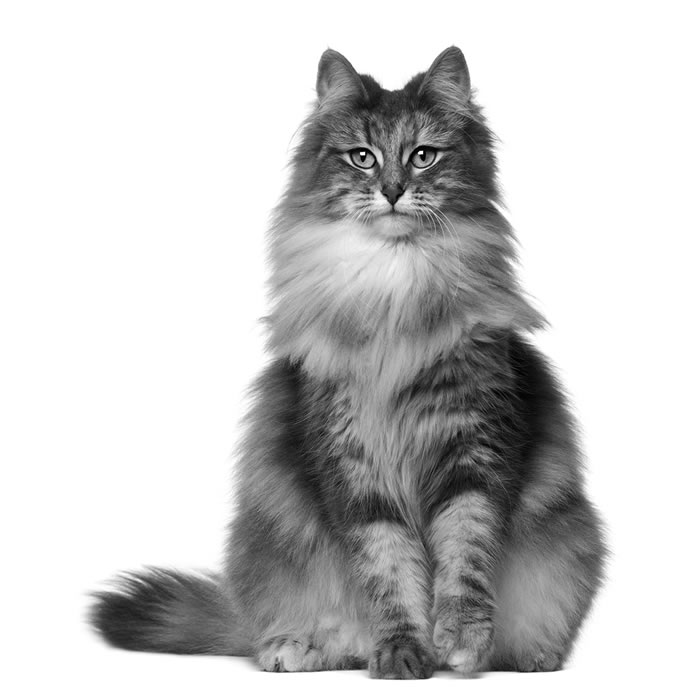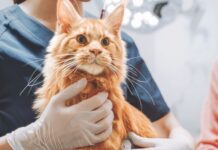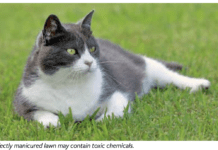Bigstock


Q. Our year-old male cat, found at a county animal shelter seven months ago, has been diagnosed with eosinophilic granuloma complex (EGC). His symptoms are incessant scratching, puffy gums, blistering mouth, swollen front paw, lameness, limping. Our veterinarian has prescribed steroids for him, and these have been somewhat helpful, but can you explain this disease so that we can better understand what is going on?
A. I am very sorry to hear about your kittys recent diagnosis, as I know how annoying itching can be! I am happy that he is being seen and treated by a veterinarian, as this condition can be complex, and the diagnosis and treatment of EGC can be frustrating. Perhaps a few words about our understanding of this enigmatic syndrome would be helpful.
EGC is a group of well-recognized but poorly understood conditions that account for approximately three percent of all feline skin diseases. To date, no definitive breed, age or gender predispositions have been identified for EGC in domestic cats, although data suggest that Norwegian Forest cats may be predisposed. Common presentations of EGC in cats include reddish, crusty, raised lesions, usually on the on the upper lips (called indolent ulcers), reddish, raised, plaque-like lesions on the abdominal wall or feet (eosinophilic plaques), and ulcerated, nodular, crusty lesions, often on the lower lip, tongue, hard palate, hind limb, or foot pad (eosinophilic granulomas).
Although the location, severity and duration of symptoms of EGC can vary considerably, the majority of cases have a number of things in common. The most consistent feature is the finding of eosinophils, a type of white blood cell involved in allergic reactions, on microscopic examination of the affected region.
The cause of EGC has not been determined definitively, although many researchers and clinicians believe that it is the manifestation of an extreme allergic response to a variety of things, including fleas, mosquitos, mites, plant material embedded in the skin/oral cavity, bacteria, viruses, food or inhaled allergens (like hay fever in people). Other researchers have suggested that EGC may be a form of autoimmune disease, in which a cats immune system begins to inappropriately mount an immune response against components of its skin and mucous membranes.
The diagnosis of EGC in cats relies primarily upon the recognition of characteristic lesions and microscopic evaluation of impressions and/or biopsies of the lesions. Since the characteristic accumulation of eosinophils may be due to conditions other than EGC, it is important to rule these other conditions out either by definitive diagnostics or by response to therapy directed at treating them.
Therapy for EGC usually involves the use of either topical or systemic corticosteroids such as prednisolone, dexamethasone or hydrocortisone to minimize inflammation and itching. While often effective in the treatment of feline EGC, systemic steroids can have potentially significant side effects, and it is generally recommended to limit their use to the lowest dosage that achieves a positive response.
Other drugs that inhibit inflammation and/or the immune response, such as chlorambucil, cyclosporine and interferons, may also be used, but these are usually not considered to be the primary treatment of choice. Recently, the use of antibiotic therapy was shown to be effective in the treatment of indolent ulcers and eosinophilic plaques.
The prognosis for feline EGC is usually favorable, although control may be challenging in some cases. Some cats may experience a single bout of EGC, while others may experience a more chronic clinical course. It is important to realize that in some cases, management may require medication combined with elimination/avoidance of potentially inciting agents, such as fleas and/or certain food.
I hope this is helpful, and that you and your kitty are feeling well. Please consult with your veterinarian and/or a veterinary dermatologist for more in-depth information regarding feline EGC, and keep us up to date on how your baby is doing.
-Best regards, Elizabeth
Elizabeth is thankful for the assistance of Bruce G.Kornreich, DVM, Ph.D., ACVIM, Associate Director of the Cornell Feline Health Center, in providing the answer on this page.



